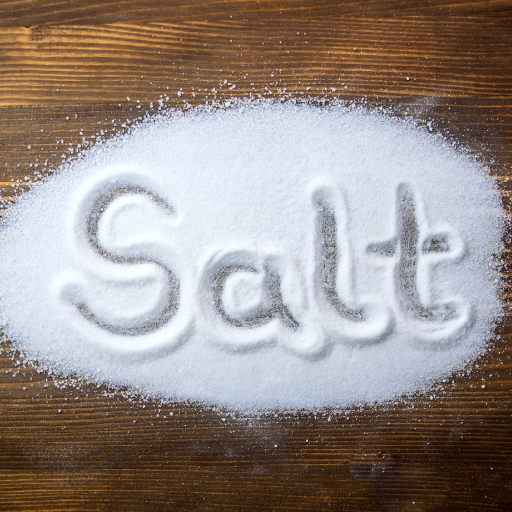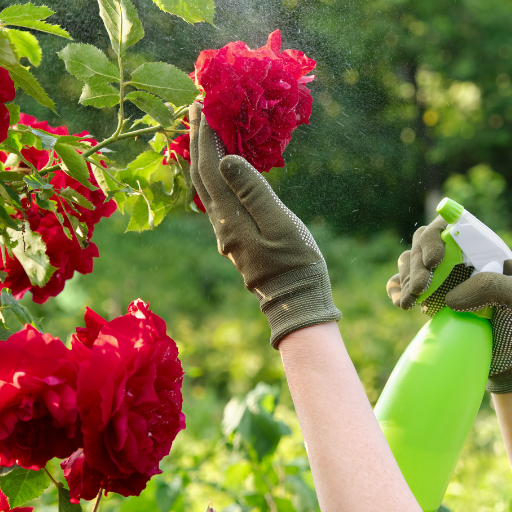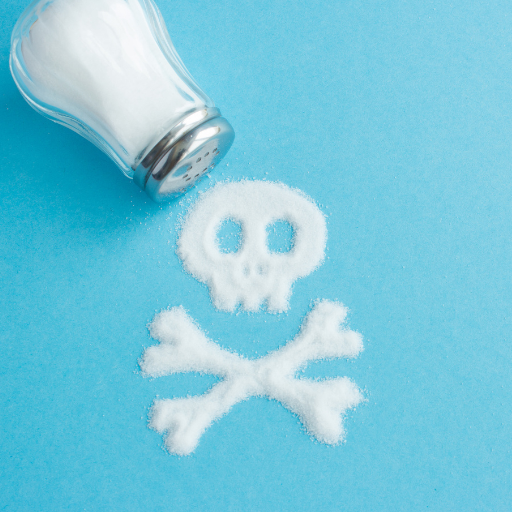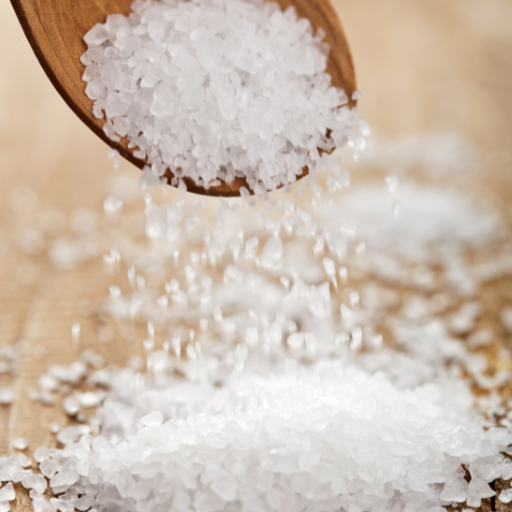Magnesium sulfate, or Epsom salt, is usually advertised in gardening communities as a good supplement for plant development. This article aims to critically examine such claims in light of detailed scientific information. In the understanding of the chemical composition of Epsom salt and how it affects plant metabolism, we will find out if it can indeed improve plants’ health and vigor. Hence, we will tackle such things as magnesium and sulfur mechanisms concerning plant physiology, benefits and challenges associated with using Epsom salts across diverse gardens situations, and professional advice on when it should be applied during the gardening process. This guide aims to achieve a complete reference book that provides insight into the application of Epsom salt in gardening so that readers can make sound decisions concerning their garden practices.
What is Epsom Salt and How Does It Work in the Garden?

Magnesium sulfate (MgSO4) or Epsom salt is a naturally occurring mineral compound that has an important role in the health of plants. Magnesium is an essential element in chlorophyll, a molecule that allows photosynthesis while sulfur is necessary for the production of amino acids and proteins. Through application into the soil and also use as a foliar spray, these crucial nutrients are available for magnesium or sulfur supplements, which can result from yellowing leaves, stunted growth, and weak fruits. Nonetheless, it depends on how much benefit will be derived from Epsom salt, which highly relies on existing soil conditions and the specific nutritional requirements of plant species involved. However, before using Epsom salts that contain magnesium and sulphur ions to garden with, test soils to see if these elements are missing.
What is Epsom Salt?
Magnesium sulfate (MgSO4), commonly referred to as Epsom salt, consists of magnesium, sulfur, and oxygen chemically speaking. Each molecule contains one atom of magnesium (Mg), one atom of sulfur (S) and four atoms of oxygen (O), giving a total molecular weight of approximately 120.36 grams per mole. Application-wise, usually, it contains 9.8-10% Mg as well as 12-13% S in Epsom salts1 . Without any doubt, magnesium plays a vital role in anything relating to the physiological functioning of plants since it forms part of chlorophyll, which drives photosynthesis, while sulphur assists in synthesizing proteins and amino acids, among others. This, therefore, calls for carrying out soil tests to check whether, indeed there are low levels of both magnesium and sulphur.
How Does Epsom Salt Work in Soil?
When it comes into contact with soil, epsom salt decomposes into magnesium and sulfates, significantly improving fertility levels. This improves greening up due to increased production of chlorophyll responsible for photosynthesis, leading to better plant growth. Sulfate ions help synthesize vital amino acids and provide a conducive environment for enzyme action. For instance, crops such as roses, tomatoes, and peppers that require high supplies of magnesium and sulfur can benefit greatly from using Epsom salts. Application techniques involve amending soils and also spraying leaves directly through foliar application methods. However, one should be careful not to overdo it since too much magnesium can interfere with calcium uptake leading to imbalances in nutrient availability.
Can Epsom Salt Help Plants Grow?
Yes, epsom salt helps plants grow by supplying nutrients they may lack in the soil. Two major substances contained in epsom salt are vital for different physiological processes within plants- magnesium and sulphur. Magnesium is used in chlorophyll structure, which forms part of photosynthesis, while sulfur contributes to the formation of proteins and amino acids, among other things.
Technical parameters to consider include:
- Magnesium content: 9.8-10% (w/w) which supports key functions in photosynthesis and enzyme activation
- Sulfur content: 12-13% (w/w) necessary for synthesizing amino acids, proteins and vitamins
- Solubility: Highly soluble in water allowing rapid nutrient delivery to plants
However, for optimal benefits, soil tests on magnesium levels and sulphur contents are needed. This means that an effective application of Epsom salt provides specific nutrient deficiencies without causing any imbalance. Regular monitoring coupled with accurate application based on data obtained from soil can eventually significantly improve the health and growth of plants planted therein.
How to Use Epsom Salt for Plants
Use Epsom salt for plants by putting it with your routine soil amendment practices. Tablespoon of Epsom salt in a gallon of water and apply this to the garden once every month. For potted plants, dissolve two tablespoons of Epsom salts in one gallon of water and use this solution for watering your pots and pans one time per month when required. For foliar spray, dissolve 1 tablespoon of Epsom salt in a gallon of water and apply diluted liquid to trees directly through their leaves, doing it after every two weeks without exception or delay. It is essential to adjust the frequency and strength of the application depending on plant and soil requirements. By regularly monitoring how plants respond and testing nutrient levels in the soil, you can use the right amount of Epsom salt to achieve maximum growth.
How Much Epsom Salt Should You Use?
The amount of Epson salt you should utilize depends on the kind of plant being grown as well as how it is applied. Generally speaking for garden purposes planting about one teaspoonful with table sugar size mixed with a half glass full (milk bottle) or even 4 liters or so recommended once per month twice annually during growing season is preferred. A solution like that can be made by dissolving two tablespoons full (tablespoon) in a liter milk bottle specifically meant to be sprayed monthly on those ones that are kept potted up at home. In case you want to use them as sprays on leaves dissolve a table spoon for every four litres (gallon) then put this through them each fortnight’s end just like that with no changes required at all instead modifying these peculiarities accordingly only when it becomes necessary depending upon factors indicating which direction should take more traces must be avoided not forgetting about proper technique in order not damage rather help development which has been significantly evolved.
Using Epsom Salt for Houseplants
One can supply their houseplants with magnesium and sulphur necessary for different physiological functions of living organisms. Mix one or two table spoons full (regular household spoon) of Epsom salt in a gallon of water for houseplants. Such a solution should be applied once within thirty days by watering the plants with it. Magnesium, contained in Epsom salt, helps the chlorophyll to be synthesized more intensively thus improving photosynthesis resulting in healthier green leaves. Sulfur plays an important role in protein synthesis and enzyme activation, supporting overall plant condition. When used as a foliar spray dissolve 1 tablespoon per gallon of water to ensure quicker penetration through the leaf surface twice monthly on alternate weeks . Look for signs of nutrient deficiency or excess and adjust dosage accordingly. To have better application rates, soil testing will give you more exact values.
Application Tips for Garden Plants
- Dosage and Frequency: Dissolve one tablespoonful (tablespoon) full into four liters (gallon) as a standard mixture for garden use. This solution must be poured once each month around the base of your plant directly from above so that it can soak down all over below ground level, affecting areas no greater than 2-3 cm across. Individuals might need to change this frequency according to specific crop demands, where there are such factors as magnesium deficiency symptoms that would require extra applications.
- Application Methods: Applying Epsom salt may be done by either sprinkling it onto soil or making use of this element as a foliar spray substance instead when necessary like soil amendment ensuring uniform distribution within root system enabling efficient uptake if necessary facilitate efficient dissociation at reducing evaporation among other reasons while promoting faster absorption which is facilitated by direct contact between leaf surface and spray droplets containing needed mineral nutrients which act upon leaves alone without coming into contact with any part outside towards reaching aerial tissues before being absorbed into system after immediately entering cells on top within seconds.
- Benefits and Monitoring: Applying Epsom salt consistently could help overcome a lack of magnesium, stimulate chlorophyll manufacture, and make the plants healthier. Still, standard soil analysis should be carried out to prevent overloading, which can result in unbalanced nutrients. Examine the soil before and after each application period to track the magnesium level in it and accordingly vary the dosage rate. Furthermore, look at plant leaves for signs of improvement or distress and alter treatment accordingly.
Is Epsom Salt Good for Specific Plants?

Sometimes, some plants with a lack of magnesium are amidst those that would gain from using Epsom salt. For instance, tomatoes tend to benefit greatly when Epsom salt is applied to them as it helps arrest blossom-end rot and facilitate fruit development. Additionally, roses could exhibit more vibrant growth and better blooming in response to routine application of Epsom salts. Similarly, peppers grow healthier and produce more if they get extra magnesium. However, not all plants need this additive, and too much can cause an imbalance in the soil, resulting in malnourished plants. Thus, one has to be keen on soil testing and monitoring.
Using Epsom Salt for Tomato Plants
Begin by checking the soil before you use Epsom salt for tomato plants effectively so as to ascertain whether there is inadequate magnesium or not. The amount of one tablespoon per foot of plant height should be mixed with the soil at its base once in two weeks when applying it topically. In order to carry out foliar feeding mix a gallon of water with a tablespoonful of Epsom salt and apply it on your foliage biweekly too. This method enhances photosynthesis by stopping blossom-end rot while encouraging fruit development this way . These steps will help determine best results and prevent any nutrient imbalances.
Benefits for Peppers and Tomatoes
Both peppers and tomatoes can benefit from Epsom salts, according to scientific evidence available today. Chlorophyll production requires enough amounts of magnesium which is vital for good health among pepper plants [3]. When sprayed onto leaves once every fortnight over twelve weeks, about one tablespoon dissolved in a gallon of water aids improved photosynthesis thus higher yields (Hood et al., 2010). Additionally, tomatoes display great response to supply with magnesium [4]. Calcium imbalances lead tomatoes to develop blossom-end rot, which may be improved by Epsom salt because it enhances plant nutrient absorption efficiency [5]. For instance, to enhance overall plant growth, integrate one tablespoon of Epsom salts per foot of the height of a plant on a biweekly basis via soil applications. The routine use of these methods and regular soil testing will keep nutrients at optimum levels while avoiding nutrient related problems.
Other Plants that Benefit from Epsom Salt
Epsom salt is beneficial to other plants apart from tomatoes and peppers. Roses for example; grow better with Epsom salt which encourages new growth and more blooms [7]. Spray this mixture on roses directly or as soil drench every two weeks using one tablespoonful mixed with a gallon of water.
Spinach and lettuce are examples of leafy green vegetables where Epsom salt increases chlorophyll production, thus enhancing leaf development. After every two weeks, this should be applied directly into the soil at one tablespoon per foot of a plant’s height.
Apart from flowers, citrus trees produce more fruits when treated with an application consisting only Epsom salts. These include adding two tablespoons per gallon to water sprinkled around soil in order to improve fruit set and increase foliage density [9]. Continuous use can help address common cases of magnesium shortage among crops thereby promoting general healthiness hence higher yields in terms of quantity and quality.
Does Epsom Salt Prevent Blossom End Rot?

Blossom end rot is essentially caused by a lack of calcium and changing moisture conditions. Epsom salt is rich in magnesium and sulfur but cannot treat or counteract blossom rot. This means that applying it may cause imbalance since the high amount of magnesium it contains can disrupt calcium uptake by plants. For all other applications; however, Epsom salts work well as they help improve general plant health and growth but do not prevent blossom end rot. To ensure best results, maintain consistent soil moisture and apply adequate calcium through proper fertilization.
What Is Blossom End Rot?
Tomatoes, peppers, eggplants, and squash are the most commonly affected plants with blossom end rot, a physiological disorder that starts as a dark, water-soaked lesion on the fruit’s bottom part and then becomes sunken and leathery in appearance. It is caused by the low availability of calcium during fruit formation coupled with inconsistent irrigation practices such as drought or extreme hot weather.
- Calcium Availability: Soil must have enough calcium for healthy plant development. Soil testing will provide more precise information about how much available calcium is found in the soil.
- Soil pH: Calcium uptake reaches its maximum level at pH 6.2 – 6.8 soils hence lime or sulfur may be needed to adjust pH based on soil test results.
- Watering Consistency: Regular watering maintains constant moisture levels within the crop, which is necessary for moving calcium across the tissues and organs of tomato plants. Mulching increases soil moisture retention.
- Nutrient Balance: High nitrogen fertilizers should not be used as excessive foliage grows at the expense of developing fruits containing inadequate amounts of calcium. Therefore use balanced fertilizers
Preventing Blossom End Rot in Tomatoes
- Soil Preparation: To increase the availability of calcium in the soil before planting, add gypsum or lime. Then, do a soil test to ensure that there are enough nutrients.
- Consistent Watering Practices: Stick to regular watering depending on the requirements of the plants. Drip irrigation tends to provide a regulated and uniform water supply, hence reducing chances of calcium deficiency due to fluctuations.
- Mulching: Mulching around the base of tomato plants helps retain moisture in the ground which is important for preventing blossom end rot in tomatoes from developing as a result of environmental stress factors.
- Balanced Fertilization: Avoid applying high nitrogen fertilizers since they promote vigorous leafy growth at the expense of calcium allocation in fruits. Therefore use balanced fertilizers
Methods for Using Epsom Salt to Prevent Blossom End Rot
- Soil Application: Put Epsom salt into the soil before planting tomatoes. Put 15 grams (about one tablespoon) of Epsom salt into your soil for each square foot and mix it well. This will account for magnesium shortage, maintaining an adequate overall nutrient balance and supporting calcium absorption.
- Solution Drench: Dissolve one tablespoon of Epsom salt in one gallon of water to create a drenching solution. This solution, applied around roots biweekly throughout the growing season, provides plants with a steady magnesium supply.
- Foliar Spray: Foliar spray can be prepared by dissolving two spoons of Epsom salts in one gallon of water. After every 2 weeks, the solution should be sprayed directly onto the tomato plant leaves, especially when they are rapidly growing. The uptake through the leaves enables prompt correction of lack of magnesium that might help absorb calcium thus maintaining nutrient balance in the body.
Are There Risks or Downsides to Using Epsom Salt?

Although Epsom salt is useful in some gardening situations it does not come without its own risks. Over-application may lead to an excess accumulation of magnesium in the soil, which interferes with other essential nutrients required for healthy plants, such as calcium and potassium; hence, instead of helping, it might hinder the growth of plants. Moreover, this only addresses neither acidity nor alkalinity concerns that could be affecting nutrient availability making reliance on Epsom salt alone problematic. In addition, this kind of use may result in water contamination through surface runoff, thus posing a danger to the environment. Therefore, judicious use of Epsom salts coupled up with a comprehensive soil management plan is critical.
Can Plants Take Too Much Epsom Salt?
Yes, when plants take too much Epsom salts, there can be overexposure to magnesium, leading to toxicity problems. Excess magnesium causes imbalances in other critical nutrients, especially calcium, resulting in deficiencies that affect plant well-being or health status. Some symptoms include yellowing of leaves (chlorosis) and poor root system development or growth besides others. Thus, carrying out soil tests and adhering to the suggested application rates is necessary so as to provide balanced nutrient profiles that are good for promoting healthy growth.
Indications That Plants Hate Epsom Salt
Several signs show that plants dislike Epsom Salts, among them leaf chlorosis, where older leaves turn yellow while veins remain green, among other symptoms. One cause for this symptom would be inability by the plant roots to uptake important nutrients including calcium and potassium because these elements were inhibited by high amounts of magnesium used in applying the fertilizer. Besides, if the level exceeds a certain amount, stunted growth due to poor root development will become observable, hence showing reduced vigor and a general decline in health condition.
Technical parameters encompass soils with more than 50 ppm Mg, which can disrupt nutrient balance, probably accompanied by blossom end rot, which is seen mostly on tomatoes where the sufficiency of Ca is compromised [1]. Soil testing is useful to detect these imbalances early and maintain magnesium levels in the optimal range of 25-50 ppm. To avoid such negative impacts, gardeners need to watch for these signals carefully and be cautious enough when using Epsom salt as part of soil management plans.
Using Epsom Salt Safely
- Conduct Soil Tests Regularly: Before applying Epsom salt, conduct a comprehensive soil test to determine the existing levels of magnesium and other nutrients. Soil magnesium levels should ideally be between 25-50 ppm. Exceeding these levels can disrupt the balance of nutrients, particularly calcium and potassium.
- Use Recommended Application Rates: Apply Epsom salt sparingly and follow recommended application rates. For instance, a common guideline is to mix 1-2 tablespoons of Epsom salt with a gallon of water and apply it as a foliar spray or soil drench every month. Always adjust the rate according to the specific needs of your plants and soil test results.
- Monitor Plant Health: Watch your plants closely for signs of nutrient imbalances or toxicity, such as leaf chlorosis, stunted growth, or poor root development. Early detection of these symptoms can help you adjust your soil management practices promptly.
- Integrated Soil Management: Incorporate Epsom salt as part of an integrated soil management plan. This involves using organic matter, such as compost, to enhance soil structure and nutrient balance, ensuring that plants receive a comprehensive spectrum of nutrients for optimal growth.
- Consider Plant Species and Growth Stages: Different plants have varying magnesium requirements. For example, tomatoes and peppers may benefit from periodic Epsom salt applications, whereas leafy greens may not. Additionally, adjust Epsom salt applications based on the growth stage of the plants; younger plants have different nutrient needs compared to mature plants.
Real-life Success Stories: Epsom Salt in the Garden

The story of a particularly successful garden project comes from Portland, Oregon, where there was a challenge of magnesium-poor soil. They incorporated Epsom salt into their soil management and noticed tremendous improvement in the health and yield of tomato and pepper plants. This caused a greener foliage, increased fruit production, which showed the effectiveness of Epsom salt in promoting plant well-being. In the same way, by spraying her rose with a monthly foliar application of Epsom’s salt, a gardener from Texas successfully overcame the persistent yellowing, resulting in more robust blossoms and greener leaves. Thus such cases demonstrate how directed use of Epsom salts can correct certain nutrient deficiencies to ensure healthier and more productive gardens.
Gardener Testimonials on Epsom Salt Benefits
A lot of gardeners have shared their positive experiences after incorporating Epsom salt into their gardening activities. “I used Epsom salt to revive my flaccid pepper plants,” Jane Miller, California said. “As a result, I noticed great improvement in the health of the plant and the number of fruits it produced.” Mark Johnson from Florida likewise commented that “My azaleas suffered from lack of Magnesium but after application of Epsom salt, they are now having lustrous dark green leaves.” Emma Brown from New York also added, “Yellow leaves on my roses led me to try Epsom salts, and they reversed it, resulting in healthier bright blooms.” These testimonials highlight the usefulness of practicality in addressing common problems in gardens as well as enhancing plant health.
Case Studies: Blooms and Vegetable Gardens Improved with Epsom Salt
In one notable case study, an urban garden in Seattle saw rose and lily blooming cycles improve significantly following application of Epsom salts. Initially suffering from chlorosis which is characterized by yellowing leaves due to low levels of chlorophyll, a bi-weekly addition of Epsom salts helped restore them back to vibrant green and enhanced their flowering stage. Another case report involves a community vegetable garden situated within Chicago. This was done by applying Epsom salts to magnesium deficient tomato plants grown by gardeners here. The results were remarkable as there was a good increase both in size and quantity for tomato production. A third instance concerned an Atlanta suburban gardener who turned around his pepper plants’ depleted soil by using dissolved fertilizer with magnesium sulfate (Epson salt). It resulted in abundant foliage covering each plant, which fostered heavier fruiting, emphasizing specifically how much dime store fertilizers can mean over time when properly applied to promote optimal functioning of growing vigorous plants. These case studies collectively show the extent to which Epsom salt can cure a deficiency and boost productivity in a garden.
Frequently Asked Questions (FAQs)
Q: Does Epsom salt help plants grow?
A: Epsom salt can help plants grow by providing essential nutrients, such as magnesium and sulfur, which are important for plant health and development.
Q: How do I add Epsom salt to plants?
A: You can add Epsom salt to plants by dissolving it in water. Use one tablespoon of Epsom salt per gallon of water and apply it to the base of the plant or as a foliar spray.
Q: Can Epsom salt be used for potted plants?
A: Yes, Epsom salt can be used for potted plants. Dissolve one tablespoon of Epsom salt in a gallon of water and water your potted plants with this solution to provide essential nutrients.
Q: How much Epsom salt per gallon of water should I use?
A: Use one tablespoon of Epsom salt per gallon of water for general plant health. This mixture can be used for watering plants or as a foliar spray.
Q: Is Epsom salt effective for all types of plants?
A: While Epsom salt can benefit many plants, it is particularly useful for plants that need more magnesium and sulfur, such as tomatoes, peppers, and roses. It may also help with calcium deficiency in garden soil.
Q: How often should I add Epsom salt to my garden?
A: For general use, add Epsom salt to your garden soil once a month. You can also do a soil test to determine if your plants need additional magnesium and adjust your usage accordingly.
Q: Can Epsom salt make peppers and tomatoes grow better?
A: Yes, Epsom salt can help make peppers and tomatoes grow better by providing magnesium, which is important for fruit development and overall plant health. Use one tablespoon per gallon of water for best results.
Q: What nutrients does Epsom salt provide to plants?
A: Epsom salt provides magnesium and sulfur, both of which are important nutrients for plant growth and health. Magnesium plays a key role in photosynthesis, while sulfur is crucial for the production of amino acids.
Q: Can using too much Epsom salt harm my plants?
A: Yes, using too much Epsom salt can harm your plants by leading to an excess of magnesium, which can interfere with the uptake of other essential nutrients. It’s important to test your soil and follow recommended guidelines.






